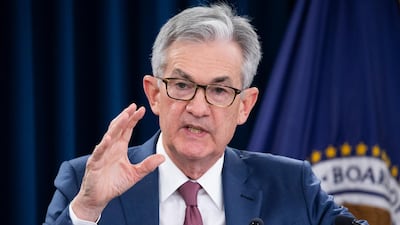Arabian Gulf central banks lowered interest rates following the third rate cut on Wednesday by the US Federal Reserve, whose chairman indicated no further decisions are likely in the short term unless the world’s largest economy slows down.
The UAE Central Bank reduced the interest rate by 25 basis points (bps) on its certificate of deposits, the monetary policy instrument through which changes in interest rates are transmitted to financial institutions.
The rate reduction became effective from Thursday, which is also when the repo rate on borrowing short-term liquidity from the central bank against certificates of deposits fell by 25 bps.
Certificates of Deposit, which the central bank issues to banks operating in the
country, are the monetary policy instruments through which changes in interest rates are transmitted to the UAE banking system.
The Fed cut the key overnight lending rate by a quarter-percentage point to a range of 1.50 to 1.75 per cent. The third downward revision of the key rates in consecutive quarters was widely anticipated by the market. The rate cut in July was the first since the financial crisis, which came on the back of nine rate increases since 2015, when the Fed started gradually increasing the cost of borrowing.
“We took this step to help keep the economy strong in the face of global developments and to provide some insurance against ongoing risks,” said Fed chairman Jerome Powell. “We see the current stance of monetary policy as likely to remain appropriate as long as incoming information about the economy remains broadly consistent with our outlook.”
The rise in the benchmark interest rates last year in the US, the world’s biggest economy, was driven by strong job, consumer and retail numbers. The US economic data in recent quarters has presented a mixed picture on consumer sentiment weakening. Manufacturing and labour markets are still showing signs of strength and unemployment in the US is at a 50-year low. The US economy grew faster than expected at 1.9 per cent year-on-year in the third quarter, the Commerce Department said.
The S&P 500 rose 0.3 per cent to a record high of 3,046.77 following the Fed’s decision. The Dow Jones Industrial Average gained 0.4 per cent to close at 27,186.69 and the Nasdaq Composite index was up 0.3 per cent to 8,303.98.
“It appears that the Fed is also seeking to draw the line under further easing for the time being,” said Tim Fox, chief economist at Emirates NBD.
Rajan Naik, director of Financial Markets Online, said the rate cut is “another master class in the long game from Jerome Powell ... [and] Mr Powell is keen to see off any economic clouds before they darken the horizon.”
Most of the banking regulators in the six-member economic bloc of the GCC usually mimic the Fed’s moves on key interest rates owing to the peg of their currencies to the US dollar. The exception is Kuwait, whose dinar is linked to a basket of currencies.
Saudi Arabia’s central bank lowered its repo rate to 225 bps from 250 bps, and its reverse repo rate to 175 from 200 bps. It said the decision is consistent with its objective of preserving monetary stability, the Riyadh-based Saudi Arabian Monetary Authority said on its website.
Kuwait’s banking regulator also cut its discount rate by 25 basis points to 2.75 per cent from 3 per cent after keeping it unchanged in July and September when other Gulf central banks cut rates following the Fed’s moves.
The central bank said its decision aims to “reduce the cost of borrowing ... maintain a comfortable margin for the Kuwaiti dinar, and prove a supportive environment for investment”.
The Fed, which paused rate increases and turned dovish in June, had raised rates until last year despite the ongoing US-China trade war that has threatened the US and global growth, forcing the International Monetary Fund and The World Bank to cut their estimates for world economic growth this year.
The IMF earlier this month slashed the global growth a record fifth time, warning that deteriorating global trade will have serious consequences for the world economy.
Both US and China, the two top global economies last week said they are making progress on trade talks and are getting closer to signing an agreement to seal the first phase of a trade deal. It is not clear if the two sides will be able to seal the deal, as both have made similar claims in the past.
President Donald Trump, who has consistently criticised Mr Powell in the past through repeated statements and fiery tweets, accusing him of not cutting rates fast enough to address market needs, said in a tweet on Thursday: "People are VERY disappointed in Jay Powell and the Federal Reserve." He added that the Fed had "called it wrong from the beginning".
"Other are running circles around them and laughing all the way to the bank. Dollar & Rates are hurting ..."
The president, who is campaigning for 2020 re-election has argued, for more aggressive interest rate cuts to compete with other countries that have lower rates.

